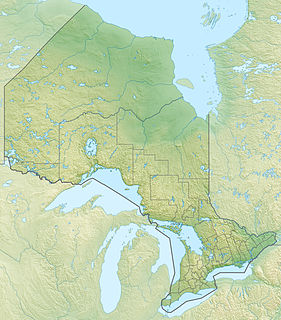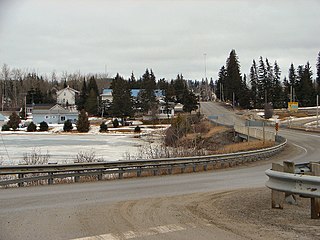| Loch Lomond | |
|---|---|
| Location | Algoma District, Ontario |
| Coordinates | 48°22′15″N84°11′43″W / 48.37083°N 84.19528°W Coordinates: 48°22′15″N84°11′43″W / 48.37083°N 84.19528°W [1] |
| Etymology | Named after Loch Lomond |
| Part of | Great Lakes Basin |
| Primary inflows | Lochalsh River |
| Primary outflows | Lochalsh River |
| Max. length | 3.2 kilometres (2.0 mi) |
| Max. width | 0.7 kilometres (0.43 mi) |
| Surface elevation | 339 metres (1,112 ft) [2] |
Loch Lomond is a lake in geographic Glasgow Township [3] in the Unorganized North Part of Algoma District in Northeastern, Ontario, Canada. [1] It is in the Great Lakes Basin and lies within the Chapleau Crown Game Preserve.
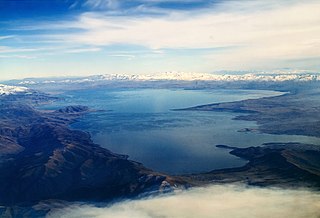
A lake is an area filled with water, localized in a basin, that is surrounded by land, apart from any river or other outlet that serves to feed or drain the lake. Lakes lie on land and are not part of the ocean, and therefore are distinct from lagoons, and are also larger and deeper than ponds, though there are no official or scientific definitions. Lakes can be contrasted with rivers or streams, which are usually flowing. Most lakes are fed and drained by rivers and streams.

Unorganized North Algoma District is an unorganized area in northeastern Ontario, Canada, comprising all areas in Algoma District, north of the Sault Ste. Marie to Elliot Lake corridor, which are not part of an incorporated municipality or a First Nation. It covers 44,077.03 km2 (17,018.24 sq mi) of land, and had a population of 5739 in 2016.
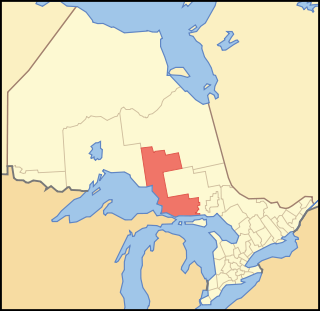
Algoma District is a district and census division in Northeastern Ontario in the Canadian province of Ontario.
The primary inflow is the Lochalsh River arriving from Glasgow Lake at the west. The primary outflow, at the east, is also the Lochalsh River, which flows to Dog Lake and then via the Dog River, the Michipicoten River, and the Magpie River to Lake Superior.

The Michipicoten River is a river in the Algoma District of northern Ontario, Canada, which flows from Dog Lake and joins with the Magpie River to empty into Michipicoten Bay on Lake Superior near the town of Wawa. This river is 113 km (70 mi) in length and drains an area of about 5,200 km2 (2,000 sq mi).
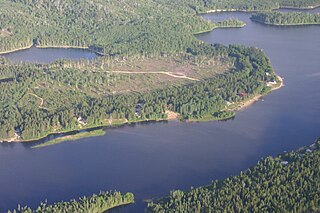
The Magpie River is a river in Algoma District, northeastern Ontario, Canada, The river empties into Michipicoten Bay on Lake Superior near the town of Wawa. The river drains an area of about 1,900 square kilometres (734 sq mi).
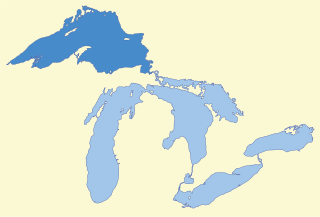
Lake Superior, the largest of the Great Lakes of North America, is also the world's largest freshwater lake by surface area, and the third largest freshwater lake by volume. The lake is shared by the Canadian province of Ontario to the north, the U.S. state of Minnesota to the west, and Wisconsin and the Upper Peninsula of Michigan to the south. The farthest north and west of the Great Lakes chain, Superior has the highest elevation of all five great lakes and drains into the St. Mary's River.



